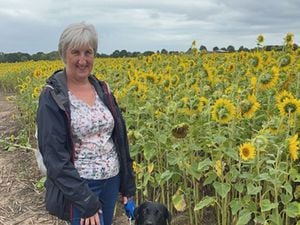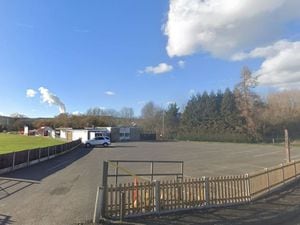Three rules for healthy grassland
There are three basic rules for productive and healthy grassland AHDB research and development scientist Debbie McConnell suggested to farmers gathered at Philip Green's Walton Heath Farm at Stone in Staffordshire for an AHDB grazing group meeting.
First ensure that your grass seed varieties are among the 72 on the NIAB recommended list. If they are not, there is a good reason for it. The second is deciding what the grass is to be used for, and thirdly, what are the most important traits on that field. On a wet field the more open tetraploid grasses which usually have higher vigour than the diploid varieties may not be the right choice.
The grass heading dates need to suit your farming system. For silage making, a seven-day heading date is preferable, whilst for grazing fifteen days may be better. Those that perform best at 400kg/ha of nitrogen applied over the season are usually the same varieties that are best at 100kg, she said.
Ploughing and cultivating before reseeding at a higher cost of possibly £700/ha compared to over seeding at less than £400/ha can be the right option. The old sward or crop residues must be properly buried, and the new seed bed fully consolidated before sowing at less than 2cm deep, then consolidated again. If you can see the wheel marks after that, you have not made a proper job of it said Mark Sheridan. When the grass comes through, preferably graze it twice before mowing suggested Debbie McConnell.
Overseeding can be effective. Grazing hard or mowing may be needed, before spraying with glyphosate. Following that with a lime application can neutralise any danger the glyphosate will kill the new seeds, and cross drilling can be worthwhile.
Philip Green runs a 160 cow flying herd on his 160 acre Walton Heath Farm, that the family have owned since the 1930s. He is selling the milk from his 7,500-litre, mainly forage fed herd, to Freshways. He buys in his replacement cross bred heifers from Holland to avoid buying cattle incubating undiagnosed TB. With his farm surrounded by the M6, housing, and purely arable land he has remained free of TB, whilst in much of Staffordshire it is rife.
The first field we walked out to was a perennial ryegrass sward almost ready to be re-cut for silage. The first cut had achieved a D value of 73, and was high in protein, qualities Philip put down to sward management with low soil compaction. At least once, perhaps twice a year, avoiding times when the ground is very wet, he uses his Brown's aerator with it's 8 inch tines to loosen the soil structure on all of his grassland.
Much of it is down for four years. Where necessary he uses a sward lifter to breakdown any pans.
His ideal pH is 6.4,with an index of 2 for phosphate and 1 for potash, allowing for his slurry applications in keeping with NVZ regulations, and being careful not to drown the important earthworm population. Many farmer's fields are short of sulphur it was said, partly as a result of continued application of magnesium limestone.
Soil compaction often means grass roots often only go down 5cm rather than the 15cm which is needed, as Debbie demonstrated when she dug out a sample. To see what the natural texture of a field would be without cattle or tractor trampling dig beside the hedge she said.
Soil compaction, squeezing the pore spaces between soil particles which will reduce grass growth by 20 per cent will cost up to £250/ha by restricting the drainage, reducing nutrient take up, and increasing the presence of weed species.
Good grazing days will be reduced. Sample when the soil is moist, not too dry, or too wet when a boot penetrates 5cm or more when walked over.
The excellent pocket book Healthy Grassland Soils is available from AHDB.





